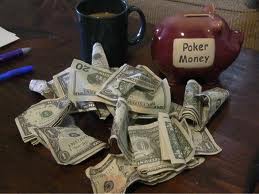 As most semi-knowledgeable No-Limit poker players realize, it’s a better idea to start with a full stack, rather than coming into the game short-stacked. By beginning with the full 100 big blinds, you’ll be able to maximize winnings if you and another opponent go all-in. So it seems that only a total fish would want to start off with less than 100bb and we should assume that they’re bad. But as we’ll discuss below, automatically stereotyping short-stacks as fish can be harmful to your bankroll.
As most semi-knowledgeable No-Limit poker players realize, it’s a better idea to start with a full stack, rather than coming into the game short-stacked. By beginning with the full 100 big blinds, you’ll be able to maximize winnings if you and another opponent go all-in. So it seems that only a total fish would want to start off with less than 100bb and we should assume that they’re bad. But as we’ll discuss below, automatically stereotyping short-stacks as fish can be harmful to your bankroll.
Power of Illusion
Not every cash game player who sits in with a short-stack is terrible. In fact, there is a small percentage of players who want to create the illusion that they’re total fish just so people underestimate them. Furthermore, it forces some full stacks to make bad decisions in thinking that they’re dealing with an inferior opponent. So regulars can experience success with a short-stack by using a combination of good skills and the element of surprise.
How to spot Good Short-Stack Players
Obviously you don’t want to treat an experienced short-stacker like a noob, so it pays to identify them. The biggest giveaway to a good short-stacked player is that they’ll be multi-tabling the same stakes. Assuming you also multi-table, you might see their screen name on another table or two – thus letting you know they’re probably skilled.
Another telltale sign is that their bankroll will never drop below a certain amount. For example, if a short-stacker begins with 40bb, they might reload as soon as it dips below 25bb. After all, they don’t want to have such an insignificant stack that full stacks are never afraid to call a raise or reraise.
From an overall perspective though, you can generally assume a short-stack is a bad player, until they prove otherwise. For the 5-10% of players that do prove otherwise, simply make the proper adjustments and keep making money.